Some time during the early hours of 4 August, the Floridian night will be temporarily banished. One of the most powerful rockets in the world, a Delta IV Heavy, will ignite. Its fiery breath with bathe Cape Canaveral in light and thunder.
Riding the rocket will be Parker Solar Probe (PSP), on one of the most audacious space missions that has ever been conceived. PSP will fly closer to the sun than any previous mission. It will dip into the sun’s atmosphere, where it will have to tolerate temperatures of around 1,400C (seven times hotter than a kitchen oven).
The launch is going to be an emotional moment for all those who have worked on the mission. This is especially true for its project scientist Nicky Fox. She is a Brit who now works at the Applied Physics Laboratory of Johns Hopkins University, Maryland, where she has shepherded the development of PSP for the last eight years.
“You put so much of your effort, your life, your waking hours into making this mission a success,” she says. “I’m totally attached. I get so excited about being in the same room with the spacecraft. It’s like meeting Brad Pitt for me or something.”
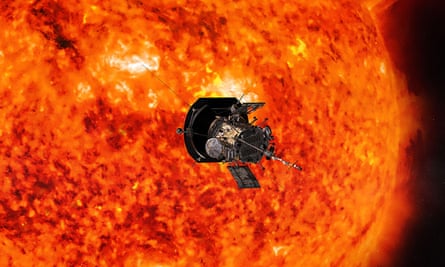
Indeed, once our conversation is over she is heading to the clean room to say goodbye for the last time. After that, PSP will be sealed into the rocket’s nose cone. She will never see it again.
A mission to fly into the sun’s atmosphere, known as the corona, has been on astronomers’ wish lists for many decades. It was even included in the original list of possible missions that Nasa should pursue when the agency was set up in 1958, in the wake of the Soviet Union’s Sputnik launch.
The reason for the interest is that the sun presents us with one of the most puzzling scientific mysteries of all time. The sun’s surface is around 6,000C, yet the corona is a whopping 3m degrees. Since the corona takes its heat from the surface, it should not be hotter than the surface. That’s like putting a pan of milk on the lowest possible hob setting and the milk boiling instantly.
Astronomers have developed a number of hypotheses for why the corona is so hot. In one theory, the rolling gas at the surface of the sun creates thunderous sounds, like waves crashing on a shore. If this sound can be transmitted to the corona it could supply the energy to heat it. Other theories suggest a variety of ways in which the magnetic fields generated in the sun might connect to the corona and supply the energy.
“It’s the kind of thing you’d think we would know by now, but we don’t,” says Tim Horbury of Imperial College, London, also a member of the PSP science team. Beyond intellectual curiosity there is a practical reason for wanting to know as well.
The corona is not fully bound to the sun. There is a region – roughly 10 solar radii above the surface – where the heating becomes so intense that the gas detaches from the sun and flows through space. This “solar wind” is composed of subatomic particles that were once inside the sun. When it hits the Earth, it makes our atmosphere glow, causing the aurora – the northern and southern lights that enchant tourists on visits to the polar regions.
As well as the aurora, the incoming solar particles can disrupt satellite communications. Large gusts of the solar wind, known as space weather, can even cause electrical malfunctions in both satellites and power stations on Earth. As we rely more and more on electronic technology in our everyday lives, understanding the danger posed by the solar wind becomes critical.
That means getting a spacecraft down into the corona, where the solar wind is formed. And that is where PSP comes in. “We’ve been waiting 60 years for the technology to mature enough for us to do such a risky mission. It really is going somewhere we’ve never been before,” says Fox.
Following its launch in August, the spacecraft will fly by Venus in September and then drop towards the sun. It’s first close pass, known as perihelion, will take place on 1 November, when it will pass within around 30 solar radii of the sun’s surface. While that is already twice as close as the previous solar record holder, the Helios-B spacecraft, it is nothing compared to what the team hope to achieve.

Initially PSP will maintain a highly elliptical orbit around the sun that takes about five months to complete. But the plan is to creep it ever closer to the sun. Eventually, it will be skimming just 6m kilometres above the hellish solar surface; this will take it through the point where the corona becomes the solar wind. Also, it will be travelling at a speed of around 200km/s, making it the fastest human-made object ever. At this point, its orbital period will be three months. What with the heat and the speed, it will be the most extreme environment a spacecraft has ever been intended to work in.
“There’s a lot of risk here. Obviously the people who built the spacecraft are extremely competent but however good you are, there is still risk in doing something this new. Our hearts are going to be in our mouths for a while until we see that everything is going to work OK,” says Horbury.
Fox agrees. For her, it is all about that first flyby. “I think that first one is going to be the most nail-biting. I think once we get through the first one, people will relax,” she says.
And then the mission will settle into its own rhythm, determined by its five-month orbital period. PSP has no cameras that will look at the sun. Instead its instruments are mainly designed to sample the particles and magnetic fields that it will be flying through. That data will then be downloaded to Earth. The science teams will analyse it and determine the probe’s next scientific goals before its dives towards the sun once again.
And it is going to have help in this Promethean mission.
Solar Orbiter is a European Space Agency mission that is currently being built in the clean rooms at Airbus, Stevenage. Designed for launch sometime after 2019, Solar Orbiter is about watching what happens on the sun and seeing how it affects the solar wind. To do this, the spacecraft has telescopes that watch the sun, and sensors to detect the particles that fly past it.
It sits farther away from the sun than PSP, hanging back at 60 solar radii. But even here the temperature is no picnic. Solar Orbiter’s heat shield must deal with a continuous 600C. There’s no ducking out into deep space for a month or two to cool down.
Like PSP, it sits behind a heat shield. This special hi-tech parasol will keep the spacecraft alive and able to work. “It’s like the insulation in your roof only much more exotic,” says Ian Walters, Solar Orbiter’s project manager at Airbus.
And it’s all that stands between success and destruction for the mission. Should the spacecraft lose control or accidentally turn the heat shield away from the sun, the unshielded areas will quickly melt if control isn’t immediately re-established.
“You’ve got literally tens of seconds,” says Walters.
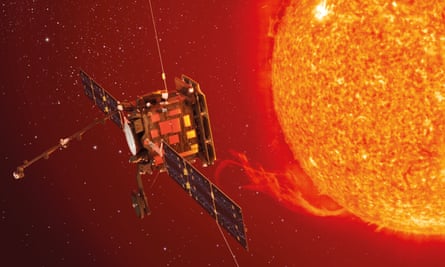
The problem is that it takes a radio signal about eight minutes to get from the spacecraft to Earth – so it cannot rely on engineers on Earth. Instead, it must be programmed with every eventuality that can possibly be thought of – and have computers fast enough to run through those possibilities in a few tens of seconds.
PSP has the same constraints when it is making its perihelion passes. “We describe [PSP] as the most autonomous spacecraft that has ever flown,” says Fox.
The big hope for the two missions is that they will be operating at the same time so that their data can be merged. They are not competitors in any way; indeed, Horbury describes the science teams as a community together. Solar Orbiter is about watching the big picture, and PSP is about getting up close and personal.
Both missions are designed to work well into the mid-2020s, although anything can happen that close to the sun. Eventually, the knowledge gained is expected feed into a real time space weather forecasting system. This will allow us to protect satellites and other electronic infrastructure from the threat of space weather.
There is a lot riding first on Parker Solar Probe and then on Solar Orbiter. This is high-risk, high-reward science. And perhaps the biggest successes of the mission are going to be the ones we can’t anticipate.
“I think the Probe will generate so much new data that it will just change the way we think about the sun. Successful missions make a change in your brain. You think about things differently. I’m hoping that in a few years’ time, we’ll be thinking about how the sun makes the solar wind, and how it heats it, in a completely different way that no one at the moment is thinking about,” says Horbury.
And for a scientist, it’s these unexpected discoveries that hold the greatest thrills.

Liftoff: space missions in development
BepiColombo
Launch date: October 2018
Built by: European Space Agency and the Japan Aerospace Exploration Agency.
Mission: Scientists hope to carry out a comprehensive study of Mercury’s magnetosphere (the area around the planet affected by its magnetic field), interior structure and surface. The seven-year mision will lift off from Kourou, French Guiana.
EnVision
Launch date: Planned for 2032.
Built by: European Space Agency
Mission: The EnVision Venus orbiter is one of three concepts being considered for the European Space Agency’s Cosmic Vision science programme. The planned collaboration with Nasa would map the surface of the planet.
Mars 2020
Launch date: July 2020.
Built by: Nasa.
Mission: The second-generation Mars rover mission by the Mars Exploration Program will investigate the geological history of the red planet’s surface using a drill and will make an assessment of the possibility of past microbial life on Mars. It will also test a method of producing oxygen from the Martian atmosphere.
James Webb space telescope
Launch date: 2021.
Built by: Nasa, European Space Agency and the Canadian Space Agency.
Mission: The James Webb space telescope will succeed the Hubble telescope, with 25 sq metres (270 sq ft) of reflective surface compared to Hubble’s 4.5 sq metres (48 sq ft). It will also see further into the infrared spectrum, allowing it to view objects obscured by dust or gas.
New Horizons
Launch date: Originally launched January 2006
Built by: Nasa
Mission: An extra Kuiper belt mission has been added to the schedule for the interplanetary space probe, which reached Pluto in 2015. If all goes to plan, it will go onwards into the belt to examine balls of rock and ice. On 1 January, 2019, it will make a flyby of an object known as 2014 MU69 and give us the first glimpse of a Kuiper belt object other than Pluto. Amy Walker


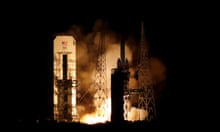

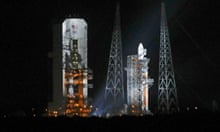
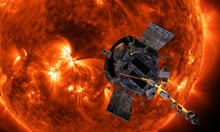
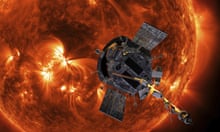


Comments (…)
Sign in or create your Guardian account to join the discussion